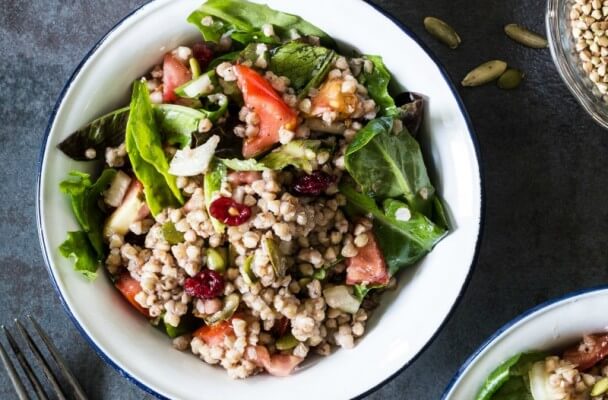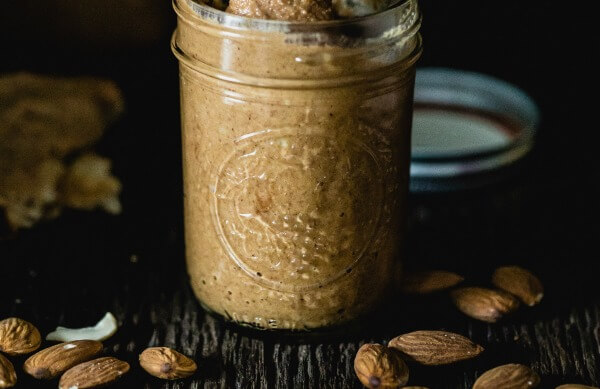Low GI Foods
For people with type 2 diabetes, managing blood sugar levels is of paramount importance. There are many strategies that people employ to keep their blood sugar levels stable. One of the most effective methods, supported by significant research evidence, is to eat primarily low glycemic index (GI) foods. Understanding glycemic index and learning more about low GI foods can help you make healthy choices that are good for your blood sugar levels.
What Is the Glycemic Index?
A food’s glycemic index is a measurement of how much the food will raise your blood glucose levels, based on its carbohydrate content (Liu, 2016). A given food is typically compared to a reference food such as pure glucose. Foods with a high GI (>70) will significantly raise blood sugar, while low GI foods (<55) have less of an effect on blood glucose levels.
When choosing food groups, the portion size as well as the glycemic index both matter. Eating a large amount of a low GI food could raise your blood sugar as much as eating a smaller amount of a high GI food. This is where the term “glycemic load” (GL) comes into play. The glycemic load of a food is an estimate of how much higher your blood glucose level will be after eating that food. One unit of glycemic load is equivalent to eating one gram of pure glucose (Liu, 2016). To calculate the glycemic load of a food, multiply the grams of available carbohydrates in the food by the food’s GI. Then, divide by 100.
A glycemic load greater than 20 is considered high, from 11 to 19 is a medium glycemic load, and a low glycemic load is below 10. Choosing foods based on their glycemic index while keeping portion sizes in mind is a good way to stay in the low to moderate range for glycemic load.
Low GI Breakfast Options
When it comes to a low GI diet, sugary breakfast foods are off the table. For example, cornflakes have a GI of 93 and a GL of 23, while Coco Pops have a GI of 77 and a GL of 20. Instead, consider some of the following breakfast options (all GI and GL figures from Harvard Medical School, 2015):
- Breakfast #1: Make 1 cup of steel cut oats or rolled oats (GI = 55, GL = 13). Add a diced apple (GI = 39, GL = 6) and a sprinkle of cinnamon (no carbohydrates) for extra flavor. A glass of unsweetened orange juice (GI = 50, GL = 12) makes the perfect accompaniment to this meal.
- Breakfast #2. Cereal lovers can still enjoy a serving of Raisin Bran (GI = 61, GL = 12) with skim milk (GI = 32, GL = 4). Enjoy a whole grapefruit (GI = 25, GL = 3) and your cup of morning coffee (no carbohydrates; add a sugar alternative to prevent an impact on your glycemic load).
Low GI Lunch Foods
When it comes to lunch, you have a variety of options for foods that are low GI but satisfying enough to last you throughout the afternoon.
- Lunch #1: Mixed salad greens contain no carbohydrates and thus do not affect your blood sugar levels. To make your salad hearty enough for lunch, add chickpeas (GI = 10, GL = 3), a diced tomato, cucumber, and feta cheese.
- Lunch #2: Packing a sandwich is a great way to ensure you stay within your GI limits at lunchtime. Prepare a sandwich on whole grain bread (GI = 51, GL = 7) with your favorite lunch meat (no effect on glycemic load), lettuce, and a slice of cheese. Add a handful of baby carrots (GI = 35, GL = 2) to dip in a serving of hummus (GI = 6, GL = 0) for an extra protein boost.
Low GI Dinner
Low GI dinners don’t have to be boring. You can enjoy many of your dinner favorites by swapping to whole wheat versions of pasta or bread for a lower GI alternative.
- Dinner #1: Prepare whole wheat pasta (GI = 42, GL = 17) with tomato sauce and meatballs (no effect on glycemic load). Serve with a side salad dressed with olive oil and vinegar.
- Dinner #2: Whole wheat couscous (GI = 65, GL = 9) provides complex carbohydrates, while a grilled salmon fillet (no carbohydrates) adds protein. Serve with asparagus or mashed parsnips (GI = 52, GL = 4).
- Dinner #3: Chili makes a hearty and low GI dinner. Simply sauté an onion, hot peppers, and garlic until tender. Add hamburger and cook until browned. Then, add a can of tomato juice, kidney beans (GI = 29, GL = 7), and black beans (GI = 30, GL = 7). Season with cumin and chili powder, simmering until the flavors blend.
Desserts that are Low GI
When it comes to desserts, it can be challenging to find a low GI option. The most difficult part is getting out of the mindset that desserts must be laden with sugar to taste good. One option is to recreate your favorite dessert recipes with sugar alternatives that do not impact your glycemic load. Of course, you can also enjoy the regular version of your favorite treat while keeping portion sizes in mind. A few bites of cherry pie or two squares of dark chocolate will not dramatically affect your glycemic load. For example, one serving of peanut M&Ms has a GI of 33 and a GL of 6. Alternatively, enjoy low GI desserts such as a bowl of berries with unsweetened whipped cream, carrot cake made with whole wheat flour, or a baked apple (GI = 39, GL = 6) stuffed with raisins (GI = 64, GL = 28) and cinnamon.
Recipes with Low GI Foods
Below are a few suggestions of recipes that make use of low glycemic index foods. For more recipes that utilize the glycemic index to build a healthier meal option, be sure to check out our pages about the glycemic index and the diabetes diet.

Buckwheat Salad Recipe
This hearty salad is made with buckwheat to serve up a filling dish that is fit for lunch or dinner. Buckwheat, like quinoa, is actually the seed of a plant, giving it a lower glycemic index than standard grains.
Ingredients: Mixed greens, buckwheat, tomatoes, onion, raw pumpkin seeds, dried cranberries, rice wine vinegar, sesame oil, salt, black pepper.
Total Time: 15 minutes
| Yield: 5 servings

Almond Butter Recipe
Almond butter is a scrumptious spread that is ideal for painting your fruits and vegetables with a pronounced palate and smooth, creamy texture while simultaneously adding protein and other essential nutrients to your plate.
Ingredients: Almonds, coconut oil, maple syrup, salt
Total Time: 45 minutes
| Yield: 2 cups
Healthy Snacks with a Low GI
Most everyone needs snacks to get them through the day, and it’s important to know which will have a significant impact on your blood sugar levels. For a way to stay clear of snacks that might affect you adversely, we recommend sticking to these low GI snacks and the snacks suggested on our diabetes and diabetes diet pages.
Healthy Eating
- Healthy Snacks
- Healthy Highlights
- 5 Uses for Cacao Powder
- 5 Ways to Eat Farro
- 6 Best Gluten-Free Foods
- Alcohol and the Body
- Almond Flour Recipes
- Anti-Aging Superfoods
- Beat the Afternoon Slump
- Benefits of a Plant-Based Diet
- Benefits of Baobab
- Benefits of Cashews
- Benefits of Coconut Oil for Hair
- Benefits of Coconuts
- Benefits of Dates
- Benefits of Fenugreek
- Benefits of Garcinia Cambogia
- Benefits of Goji Berries
- Benefits of Kale Chips
- Benefits of Monk Fruit Sweetener
- Benefits of Peanuts
- Benefits of Pecans
- Benefits of Pistachios
- Benefits of Pumpkin Seeds
- Benefits of Spelt Flour
- Benefits of Steel Cut Oats
- Benefits of Sunflower Seeds
- Benefits of Tiger Nuts
- Benefits of Turmeric
- Benefits of Walnuts
- Benefits of Wheatgrass
- Best Food Fads
- Cacao vs Cocoa
- Caffeine-Free Energy Foods
- Chocolate That's Good for You
- Diet vs. Exercise
- Fat Burning Foods
- Food Myths Debunked
- Foods for Bone Density
- Foods for Colon Health
- Foods for Healthy Hair
- Foods for Healthy Skin
- Foods to Help Sleep
- Foods to Reduce Stress
- Green Tea Benefits
- Healthy Baking Flours
- Heart Healthy Habits
- High Protein Health Risks
- How to Boost Your Metabolism
- How to Lose Weight While Aging
- How to Throw a Vegan BBQ
- Kaniwa vs Quinoa
- Little Health Foods
- Low-Carb: Fad or Friend?
- Making Healthier Desserts
- Mediterranean Diet Meal Plan
- Natural Beauty Products
- Nuts for Weight Loss
- Preparing Vegan Meals
- Preventing Muscle Degeneration
- Rare Superfoods
- Reduce Sugar Intake
- Save Time By Going Vegan
- Smarter Snack Swaps
- Smoothie Ingredients
- Soy Protein vs Whey Protein
- Starting a Plant-Based Diet
- Steel Cut vs Rolled Oats
- Sugar Substitutes
- Vegan Proteins
- Vegan Substitutions for Fall Recipes
- Why Go Vegan
- Healthy Meals
- Healthy Recipes
- Sports Nutrition
- Vitamins, Minerals & Nutrients

